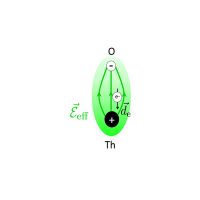News
Improved Measurement of the Electron’s Electric Dipole Moment
Although the Standard Model of particle physics, one of the triumphs of modern physics, accurately describes all particle physics measurements made in laboratories so far, it is unable to answer many questions that arise from cosmological observations, such as the long-standing puzzle of why matter dominates over antimatter throughout the observable universe.
To explain these phenomena, various extensions of the Standard Model have been proposed. These theories posit new particles and interactions, which interact with the known particles to modify their properties. For example, the observed cosmological matter–antimatter asymmetry can be explained by the existence of very massive particles whose interactions violate time-reversal symmetry. These same particles give rise to an electric dipole moment (EDM) along the spin axis of the electron. The charge of the electron is no longer perfectly spherical, but is slightly asymmetric and correlated with the direction of its spin.
Electron electric dipole moments only slightly smaller than the current experimental bounds have been predicted in many beyond-Standard-Model theories. But no electric dipole moments of fundamental particles have been observed so far. In collaboration with the DeMille group at Yale and the Gabrielse group at Northwestern, we (ACME collaboration) experimentally the electron EDM by observing the spin precession of the electrons inside ThO molecules, which are subjected to large intramolecular electric fields. In our latest measurements, we have improved the experimental limit on the electron EDM by an order of magnitude compared to previous measurements. The newly improved bound on the electron EDM implies that a broad class of conjectured particles, if they exist and time-reversal symmetry is maximally violated, have masses that greatly exceed what can be measured directly at the Large Hadron Collider. This showcases the power of table-top experiments as generic probes of new fundamental physics. Future improvements in sensitivities will further increase the mass scales that we can access.
